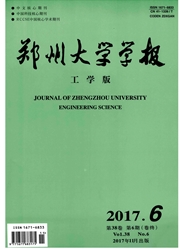

 中文摘要:
中文摘要:
根据建模出发点的不同,把各种建模方法分为模拟视觉系统模型、统计分析模型两大类方法.根据不同的目标、不同的模型特征和结构,把模拟视觉系统的稀疏编码模型分又为最大似然概率、目标函数优化、Gabor小波基函数、超完备基、神经网络、分层稀疏编码六类模型.根据模型学习方法的不同,统计分析模型又分为独立分析、非负矩阵分解以及特定特征的稀疏编码3种模型.针对上述各种模型进行了介绍、分析和研究,并归纳总结不同方法的主要特点,最后进行了展望.
 英文摘要:
英文摘要:
The current research situation about sparse coding is summarized. According to the different start- ing points, most of the methods are divided into two types. According to the different modeling objectives, characteristics, the sparse coding models for simulation of the visual system are classified into the following six categories, those are maximum likelihood models, the optimization models of the objective functions, the func- tion model of Gabor wavelet basis, super-complete basis models, the models of neural networks, and the level sparse coding model. In accordance with learning methods for models, the statistical analysis models are divid- ed into independent analysis models, non-negative matrix factorization models, as well as specific characteris- tics of sparse coding models. All the various models are introduced, analyzed and studied, the main features of different models are Summarized and compared, and their future prospects are proposed.
 同期刊论文项目
同期刊论文项目
 同项目期刊论文
同项目期刊论文
 期刊信息
期刊信息
